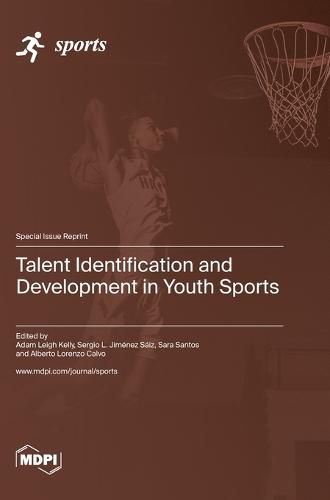Readings Newsletter
Become a Readings Member to make your shopping experience even easier.
Sign in or sign up for free!
You’re not far away from qualifying for FREE standard shipping within Australia
You’ve qualified for FREE standard shipping within Australia
The cart is loading…






This title is printed to order. This book may have been self-published. If so, we cannot guarantee the quality of the content. In the main most books will have gone through the editing process however some may not. We therefore suggest that you be aware of this before ordering this book. If in doubt check either the author or publisher’s details as we are unable to accept any returns unless they are faulty. Please contact us if you have any questions.
We are delighted to share our Special Issue on Talent Identification and Development in Youth Sports. In 2020, the editorial team had several informal discussions about the growing interest from researchers and practitioners in these disciplines, and subsequently wanted to create a platform to help advance this field of literature. Following these conversations, we decided to use the Personal Assets Framework (Cote et al., 2014, 2016) to outline our objectives and the potential research topics for our Special Issue. In doing so, it was hoped that the studies included can inform evidence-based youth sport policies and athlete development programmes. Submissions were encouraged from a diverse range of quantitative and qualitative research methods to examine the current context of talent identification and development in youth sports, as well as reviews to synthesise expert knowledge within these disciplines. In light of the articles that have been included within our Special Issue, we believe our initial aims of progressing the talent identification and development literature have been achieved, and now hope that the research presented can be utilised by key stakeholders (e.g., administrators, coaches, parents, practitioners) and organisational structures (e.g., national governing bodies, professional clubs, recreational teams, youth sport associations) to create more appropriate youth sport settings.
$9.00 standard shipping within Australia
FREE standard shipping within Australia for orders over $100.00
Express & International shipping calculated at checkout
This title is printed to order. This book may have been self-published. If so, we cannot guarantee the quality of the content. In the main most books will have gone through the editing process however some may not. We therefore suggest that you be aware of this before ordering this book. If in doubt check either the author or publisher’s details as we are unable to accept any returns unless they are faulty. Please contact us if you have any questions.
We are delighted to share our Special Issue on Talent Identification and Development in Youth Sports. In 2020, the editorial team had several informal discussions about the growing interest from researchers and practitioners in these disciplines, and subsequently wanted to create a platform to help advance this field of literature. Following these conversations, we decided to use the Personal Assets Framework (Cote et al., 2014, 2016) to outline our objectives and the potential research topics for our Special Issue. In doing so, it was hoped that the studies included can inform evidence-based youth sport policies and athlete development programmes. Submissions were encouraged from a diverse range of quantitative and qualitative research methods to examine the current context of talent identification and development in youth sports, as well as reviews to synthesise expert knowledge within these disciplines. In light of the articles that have been included within our Special Issue, we believe our initial aims of progressing the talent identification and development literature have been achieved, and now hope that the research presented can be utilised by key stakeholders (e.g., administrators, coaches, parents, practitioners) and organisational structures (e.g., national governing bodies, professional clubs, recreational teams, youth sport associations) to create more appropriate youth sport settings.